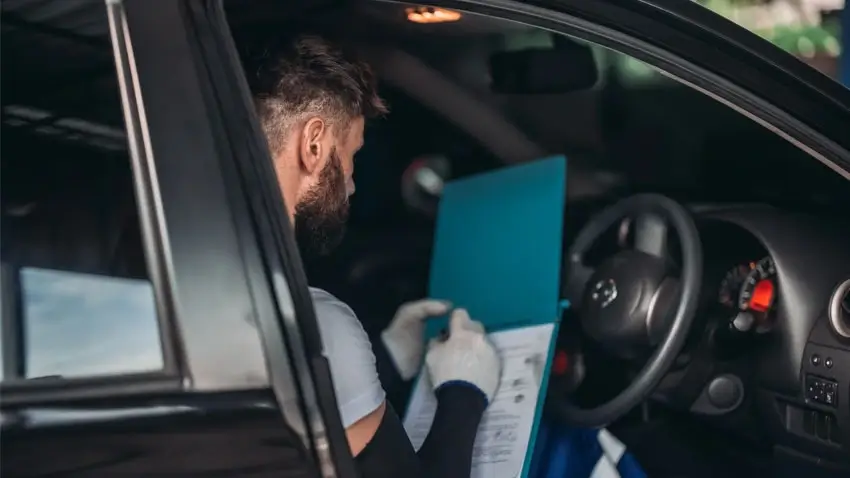
The evolution of vehicle safety has been a long process. Despite legislation, education and advances in technology, five people a day die in accidents on UK roads, and another 80 are seriously injured (average figures over the period 2014-2023).
It sometimes seems that as soon as one contributing factor is mitigated, another crops up to take its place. Accident and casualty figures have come down but there's still a long way to go before we could justifiably claim that our cars and our roads are safe, so the drive to develop ever more safety measures goes on.
Below we take a look at some of the safety developments introduced over the last few decades, as well as a few new problems that have appeared.
The good news
Computers and artificial intelligence have given cars almost magical-seeming abilities to detect, analyse and, to an extent, predict driver behaviour, and other factors. Our cars can literally steer us away from danger by means of these new developments.
Electronic stability control
Electronic Stability Control (ESC) is an in-car safety technology that aims to correct or mitigate any loss of control.
Sensors on the vehicle detect signs that the car is no longer under sufficient control, and the system may adjust the braking of each wheel separately to compensate accordingly. Whether the loss of control is due to driver error, road conditions or another cause, ESC can make the difference between safe recovery and accident. It cannot achieve the impossible and some situations may be beyond the system's ability to mitigate, but in many cases ESC can save the day.
You may hear two terms used when people refer to this system: ESC and ESP. The latter has nothing to do with being psychic in this context: it stands for Electronic Stability Program and it's just another term for ESC. The two are interchangeable.
In the UK, ESC has been fitted as standard on all new cars since 2014.
Autonomous emergency braking
Another system designed to physically intervene in situations where the likelihood of an accident is high, AEB detects a potential impending crash and responds by sounding an audible warning to the driver and/or by autonomously applying the vehicle's brakes without waiting for the driver to act. AEB is fitted as standard to most new cars sold in the UK.
Reversing sensors
Once a novelty only seen on luxury cars, reversing sensors or cameras are now common. They're not required on UK cars but most people are glad to have them and manufacturers who don't include them as standard normally offer them as an option. Their near ubiquity has prevented countless minor collisions between vehicles. Not all sensors reliably detect pedestrians but many do, especially those of higher quality, so they may also prevent some serious accidents involving pedestrians.
Blind spot monitoring
Blind spot sensors or cameras, like reversing sensors, offer a way to monitor areas that may be difficult or impossible for a driver to see unaided. Traditional rearview, door and side mirrors can all leave blindspots, and bodywork pillars between windows also block visibility of certain areas.
Blind spot monitoring systems provide audible and/or tactile alerts when a vehicle is detected in a blind spot zone. Alerts may be sounds such as chimes or spoken warnings, or a vibration delivered through the steering wheel or driver's seat.
Driver attention monitoring
Some cars have means to sense when a driver's attention may be failing through fatigue or distraction. When signs of wandering attention are detected a warning sound or vibration is delivered.
Emergency call and SOS buttons
Many cars come with integrated emergency call systems that automatically contact the emergency services if a crash is detected. Alternatively, or additionally, cars may have a manual SOS button, usually located on the dashboard or on the roof panel above the central rear-view mirror.If your car is involved in a crash, it can automatically call the emergency services for you and alert them of your location, making this a potentially life-saving system.
Lane departure alert and lane keep assist
Another system that’s becoming more common in our cars, lane departure detection, delivers an audible warning, or a tactile vibration through the steering wheel if the car drifts across the white line separating lanes.
The related, and rather clunkily named, Lane Keep Assist takes the intervention a step further if you begin to drift. If necessary, LKA can actually give your steering a nudge to get you back on track.
Tyre pressure sensors
Incorrect tyre pressures can be very dangerous. Over-inflated, under-inflated or unevenly inflated tyres can all cause accidents. Incorrect pressures increase the risk of a blowout, they degrade a car's handling, cause unnecessary additional noise and accelerate tyre wear. These days, even cheaper entry-level models are likely to have tyre pressure sensors.
The bad news
Naturally, not all changes have been for the better regarding safety. No one deliberately compromises safety, but some developments have introduced risks and unforeseen side effects while attempting to improve or advance vehicle design and manufacture in some way. The following aren't really steps backward in safety, but they have proven problematic in ways that can contribute to accidents or injury to drivers, passengers or pedestrians.
Autonomous/self-driving vehicles
When the technology matures, self-driving vehicles should aid safety by eliminating human error and reacting quicker than a human driver could. In trials conducted over the last few years, however, autonomous cars have displayed faults, flaws and shortcomings that have prevented fully self-driving vehicles from being approved for widespread use on public highways.
In the USA particularly, several cities running autonomous vehicle pilot schemes and trials have seen driverless cars cause obstructions and accidents due to faults or to unexpected responses to environmental factors that the systems weren't able to cope with.
SUVs and LTVs
We wrote recently about the increased risk these larger, higher, heavier vehicles pose to pedestrians. Unfortunately, SUVs in particular have exploded in popularity. The high, blunt fronts of SUVs tend to cause more serious injuries to people they may accidentally strike. The issue has been identified but finding a solution short of banning SUVs and LTVs is a challenge.
Electric vehicles
Electric vehicles may be better for the environment but they can be a menace to pedestrians and cyclists. Where traditional petroleum powered vehicles produced noise just by running, electric cars can be nearly silent and very hard to detect if they should approach an exposed road user from behind.
Since 2021, electric and hybrid vehicles in the UK must have sound generators. These generators, known as AVAS (Audible Vehicle Alert Systems), replicate the sound of an internal combustion vehicle. However, they generally only make noise while the car is travelling at low speed.
Drivers used to be able to turn their sound generators off but, since 2023, new EVs and hybrids sold in the UK must not allow the vehicle operator to deactivate or pause the sound generator.
